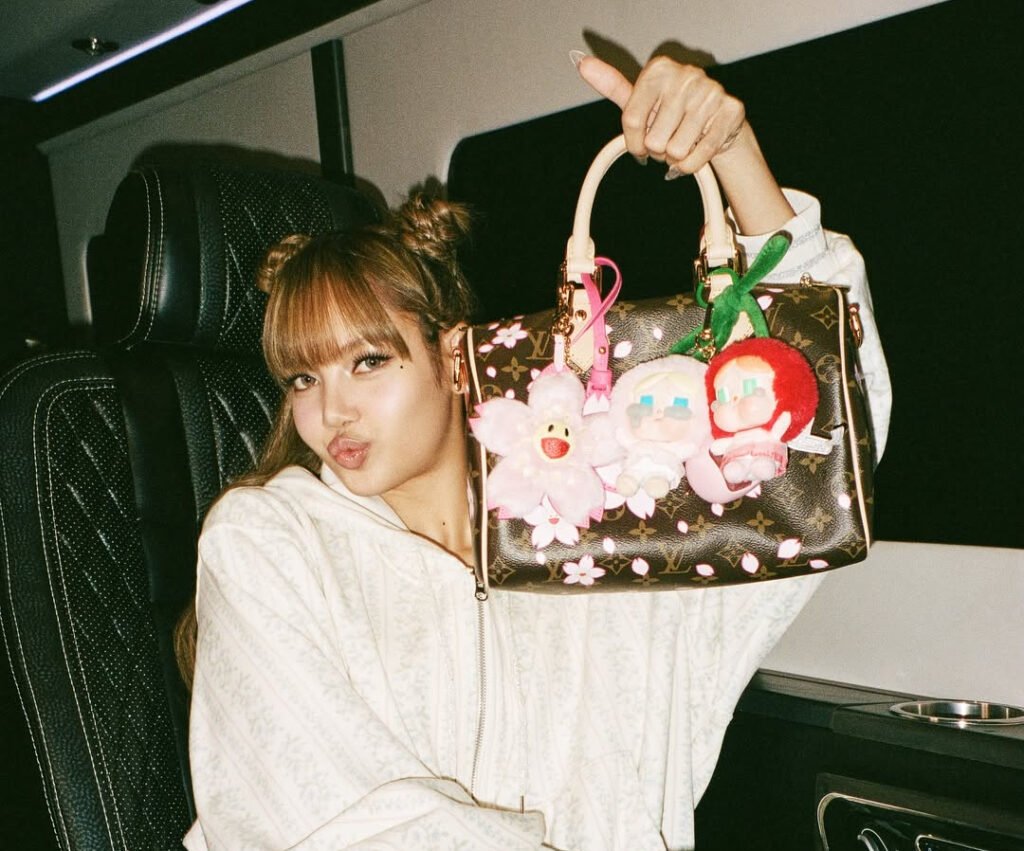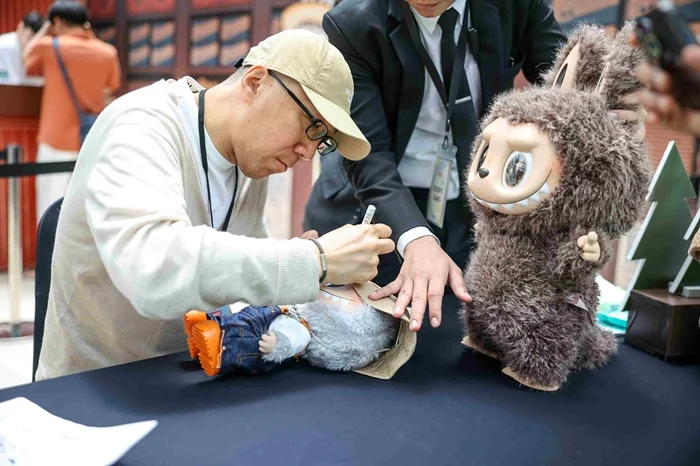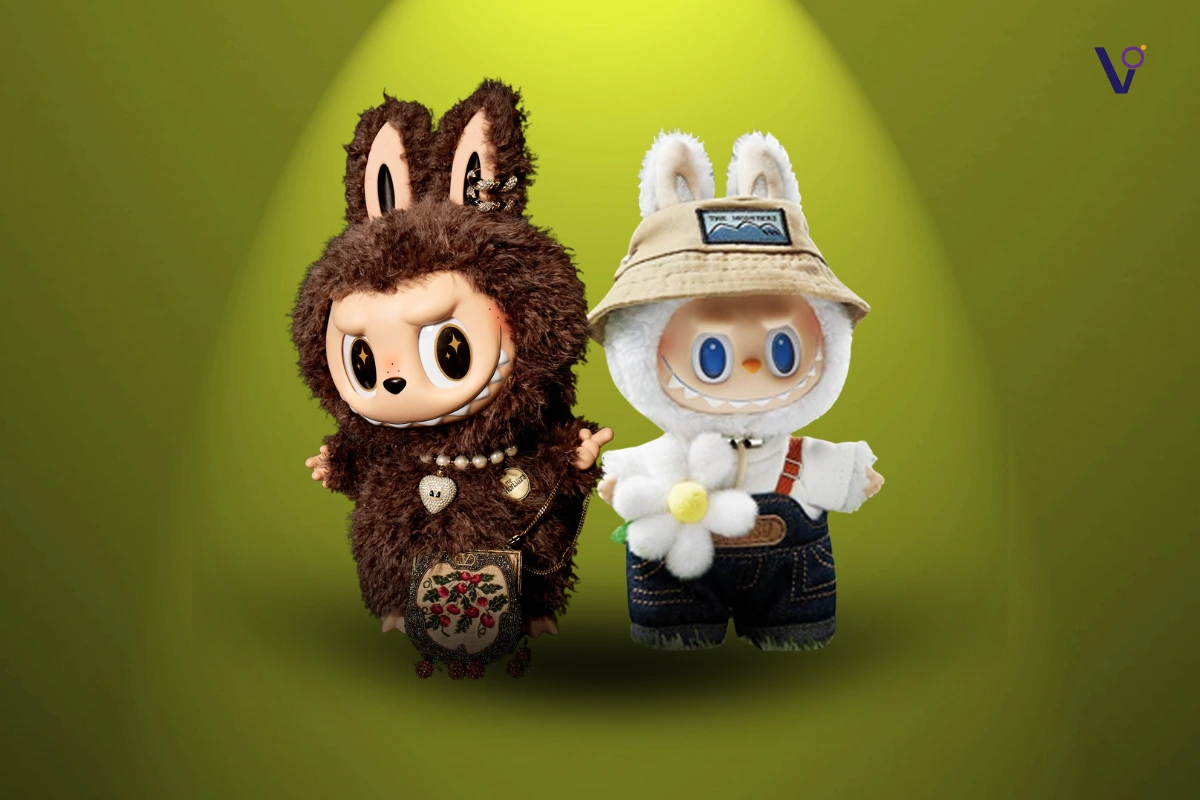Have you recently noticed a fuzzy, grinning little creature popping up all over your social media feeds? Maybe you have seen her sparking huge checkout lines in stores, causing rapid online sellouts, or even dangling from the designer bags of your favorite K-pop idols.

The Labubu doll went viral and added a staggering $1.6 billion to PopMart’s CEO’s net worth. Yes, you read that right. This incredible success came from the vision of the 38-year-old Chinese CEO who propelled PopMart to new heights, all because of the massive popularity of Labubu doll! In this blog, we will dive into the fascinating story and meteoric rise of Labubu doll, without question the most famous character from Popmart’s collectible lineup.
From Labubu’s creation to some surprising controversies, including a brush with the Thailand government and royal family, we will cover everything you need to know about this wildly popular little monster.
Who Created Labubu Doll?
Popmart’s unique appeal comes from collaborating with various artists, which keeps their characters fresh, diverse, and always engaging. Labubu was designed by Hong Kong-native artist Kasing Lung, whose artwork is based on mythology and folklore, a result of the way he grew up in the Netherlands. Lung started his artistic life professionally in 2011 as an illustrator. One year later, he had his first solo exhibition in Tokyo titled This Is What It Feels Like.

Labubu is one of a larger series known as The Monsters, which was first released as a series of storybooks in 2015. The stories follow tiny elves living in mystical Nordic forests, blending whimsy and myth. In 2019, Lung partnered exclusively with Popmart to bring his characters to life as collectibles. This licensing deal transformed the niche art series into a mass-market sensation. The initial toy series broke Popmart’s sales records and proved how powerful emotional storytelling combined with licensing can be for collectible products today.
More of Labubu Doll
The universe of The Monsters is full of quirky, lovable characters, but Labubu doll stands out as the most recognizable. Labubu isn’t merely a name but is a whole species of troublesome characters with sharp ears, wicked grins, and boundless curiosity. Imagine a playful character like Toad from the Super Mario franchise. While all Labubus are female, the tribe leader is a male named Zomo, known for his spiky tail and taller stature.
Other characters in the tribe include Makoko, famous for her pastel pink fur and heart-shaped nose. Makoko is an extremely rare collectible sold only at exclusive events, like Beijing’s Pop Land Theme Park. By limiting the availability of characters like Makoko, Popmart uses scarcity marketing to drive exclusivity and increase resale value. Other members of the tribe are Taoco, a skeleton character who is Labubu’s boyfriend; Spooky, a moonlit dumpling-headed character; Pipi, a dreamy Labubu doll with droopy ears; Yaya, who is impish with a devilish smirk; and Pipo, a party-loving winemaker.
Labubu Bold Wild Popularity and the K-pop Effect
Popmart continuously releases new Labubu versions, ranging from vinyl toys to plush keychains and apparel. Over 300 variations have been created, each slightly changing Labubu’s look or style to keep fans engaged. This strategy is common in collectible marketing, where fresh designs maintain consumer interest.
Some key collections, like The Macaron Series released in October 2023 and The Have a Seat Series, made Labubu more appealing to mainstream collectors by softening her appearance. These collections introduced seated poses and pastel fur, broadening the audience while keeping existing fans happy.
The biggest factor behind Labubu’s international success, however, is a celebrity endorsement that no one expected. Lisa from the K-pop group Blackpink was first seen holding a Labubu plush from The Monsters Fallin’ Wild Series. Her posts on social media instantly sparked a buying frenzy. Soon, Popmart’s products sold out within hours. Secondary market prices skyrocketed and global searches for Labubu surged.
Lisa’s organic enthusiasm combined with Popmart’s strategy of limited releases and regional exclusives created a textbook example of scarcity marketing powered by celebrity influence. Further interviews, including a feature by Vanity Fair, confirmed Lisa’s genuine love for the toys. This type of endorsement boosted the brand’s credibility and solidified a loyal fan base.
Why Brand Endorsements Matter More Than Ever
Brand endorsements remain the single most powerful marketing tool behind viral collectible crazes like Labubu. It is not just about who designs the product but who holds it, posts it, and styles it in ways that fans notice and imitate. This has never been more true than in 2025, where influencers and celebrities can transform niche products into global phenomena overnight.
Labubu’s story shows that even with great design and storytelling, celebrity advocacy can push a product to the next level. Lisa’s casual, authentic involvement made Labubu a cultural moment rather than just another collectible toy. For marketers, this proves that securing genuine endorsements from popular figures can provide exponential returns compared to traditional advertising.
Marketing Lessons From Labubu Doll
- Collaborations with niche artists create unique products that stand out in crowded markets.
- Scarcity and exclusivity drive demand. Limited editions and location-specific releases encourage consumers to buy fast and build resale hype.
- Ongoing, subtle product refreshes keep brands new without estranging devoted followers.
- The most effective mode of advertising in today’s digital world is celebrity endorsements.
- Pop culture allusions, such as references to the Smurfs or fairy tales, can be used to build emotional relationships with consumers.
- Building community engagement through unboxings, pop-ups, and viral videos helps brands scale organically.
Final Thoughts
Labubu’s path from a cult art toy to international collectible icon is a study in contemporary licensing, scarcity marketing, and cultural timing. As consumer attention fragments, brands that skillfully blend nostalgia, exclusivity, and cultural relevance will dominate the market.
Popmart is actively expanding Labubu’s world and exploring new collaborations. Collectors, licensors, and marketers alike can learn much from this success story.
Celebrity endorsements, especially from K-pop star Lisa, combined with limited editions and PopMart’s marketing created huge demand and rapid sellouts worldwide, making Labubu a viral collectible sensation.
Unique design, collectible variations, emotional storytelling, and smart scarcity marketing make Labubu toys highly desirable among collectors and fans, keeping the brand fresh and exciting.
The Labubu trend skyrocketed after Blackpink’s Lisa was spotted with Labubu plush toys, sparking global social media buzz and causing immediate sellouts.
Labubu became famous through artist Kasing Lung’s unique designs, PopMart’s licensing strategy, and viral celebrity exposure, turning a niche toy into a global collectible hit.
The hype centers on exclusive releases, celebrity endorsements, and the charming mischievous character design that appeals to collectors and pop culture fans alike.



